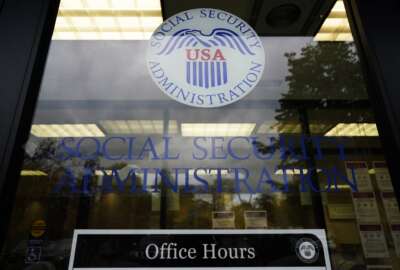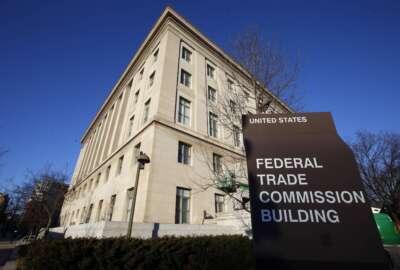Three days a week in the office? Get used to it
The push and pull over how much feds should return to the office seems headed to a grudging settlement.
Return to the office. The very concept has become the irresistible force meeting the immoveable object paradox.
Providing the irresistible force: That April memo from the White House. Right there in the second paragraph, Office of Management and Budget Director Shalanda Young said it, albeit in bureaucratic passive voice: “It is the expectation that . . . agencies will continue to substantially increase meaningful in-person work at federal offices, particularly at headquarters and equivalents, while still using flexible operational policies as an important tool in talent recruitment and retention.” That increase in flexible policies should, she said, come from assessments of their work environments that agencies must do.
Assess they have, and now agency after agency is ordering people back to work. Or trying to. This is where the immovable force comes in. Employees generally like mostly teleworking, and the big unions have determined required office presence is something agencies must negotiate over.
One reader from the FAA, which we understand was to have joined the three-days-per-week club in a memo to employees yesterday, wrote, “We are saddened by this decision made by a handful of people in the agency and being dismissive of union partners.”
The National Science Foundation, which asks headquarters employees for four days per pay period in the office — and a pledge of a permanent hybird mode — has run into opposition from its American Federation of Government Employees local. Local President Jesus Soriano commented that the agency treats employees “like numbers on a spreadsheet.” He called the affected employees “brilliant scientists and engineers and innovators,” which they presumably were before the pandemic and mass telework. Soriano said AFGE and the NSF talk about a lot of flexibilities, but hadn’t come to a formal understanding. The agency says they’re still negotiating.
Social Security does have an agreement concerning telework pending with its AFGE bargaining unit, but until it’s signed and sealed, we don’t know the details.
As Drew Friedman reports, other agencies, notably the Environmental Protection Agency and the Agriculture Department, opted to avoid the immovable object by ordering return-to-office plans only for managers and supervisors, but not bargaining unit members.
Those who teleworked already before the pandemic remember the decade-long debates over telework policy. They regularly involved Congress, which remains divided politically over how much federal employees should telework. Those earlier arguments occurred before cloud computing, remote virtual desktops, and reasonably decent voice-video collaboration platforms became common.
Today, you really can’t cite a technological reason for not teleworking. Strictly speaking, no one is arguing that productivity has dropped because people are not in their offices as much.
No, the federal workforce, no less than the workforce at large, has undergone shifts in culture and power dynamics, a tug o’ war. Executives ordering people back to the office more cite collaboration and team cohesion. In theory, management can order anything it wants. Why not five days a week in the office? One reason is the career mobility of knowledge workers. If attracting and keeping the right people requires work location flexibility, then that’s what organizations have to offer.
Given what’s coming out from agencies, the paradox will settle into three days per week in the office. Extremists at both ends will grouse, but this is where things are heading.
In the private sector, telework arrangements run the gamut. I know of one large, national non-profit that sold its building in Washington, D.C. altogether. One big banking and finance concern has told at least its executives they’ve got to start coming in. According to Business Insider, Amazon and Apple — both of which have spent billions in recent years on spiffy buildings, by the way — want people back at least three days a week. Ditto for IBM, Meta and Google. At the Walt Disney Company, it’s four days a week. Companies are facing resistance from employees, but that two-day telework model is catching on in the private sector too.
For the government, settling on telework policy leaves agency planners with the difficult issue of real estate management. As the Government Accountability Office pointed out in its widely-quoted recent report, 19 headquarters buildings in or near Washington, D.C. have about a 15% vacancy rate. Real estate costs didn’t drop 85%, though, not with leases, maintenance, protective services and the need to have a modicum of heating and air conditioning even if no one is there. More on that later, but one big question: If you come to work two days a week or five days in a pay period, or whatever, should you have an office or workstation of your own?
Nearly Useless Factoid
In the 1700s, it was ‘Custom of the Sea’ to resort to cannibalism if vessels ran out of food and water.
Source: Nantucket Historical Association
Copyright © 2025 Federal News Network. All rights reserved. This website is not intended for users located within the European Economic Area.
Tom Temin is host of the Federal Drive and has been providing insight on federal technology and management issues for more than 30 years.
Follow @tteminWFED






